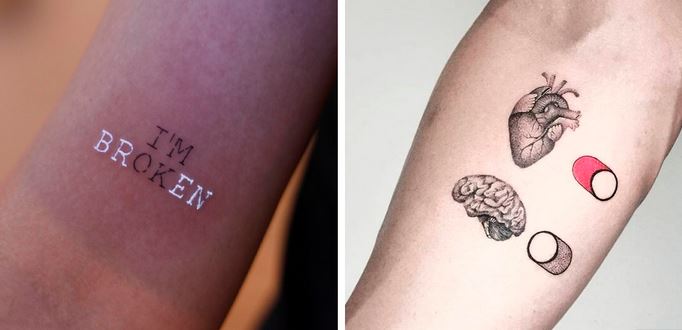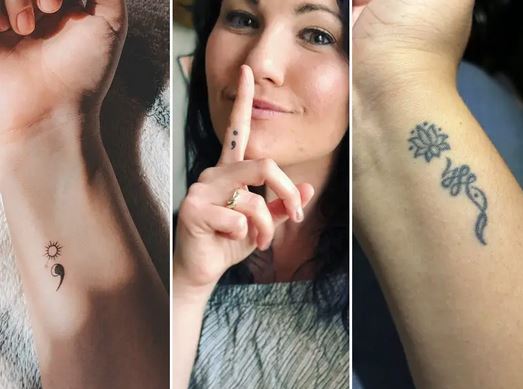Introduction to mental health tattoos
Mental health tattoos have long been a form of self-expression, but in recent years, they’ve evolved into something much deeper particularly for those navigating the complex landscape of mental health. Mental health tattoos are not just ink on skin; they’re symbols of resilience, reminders of personal journeys, and powerful tools for healing. As people seek ways to communicate their struggles and triumphs, these tattoos have emerged as a compelling form of art therapy. This blog will explore how these unique designs can foster healing and provide insight into the stories behind them while highlighting the role artists play in this transformative process. Let’s dive into the world where art meets emotional well-being through mental health tattoos.
The Rise of mental health tattoos in the Art World
mental health tattoos have surged in popularity, becoming a vibrant part of contemporary art. Artists and tattooists are embracing this trend, utilizing their skills to create meaningful pieces that resonate deeply with individuals.
These tattoos often symbolize struggles, resilience, and healing journeys. They transform experiences into visual stories carved on the skin. As society becomes more open about mental health issues, these inked expressions break down stigmas attached to them.
Platforms like Instagram showcase an array of creative designs and personal narratives, inviting conversations around mental well-being. The hashtag #mentalhealthtattoos connects people sharing similar battles.
Tattoo conventions now highlight artists specializing in therapeutic designs. This shift reflects greater awareness within the industry about the potential for tattoos to serve as powerful tools for self-expression and emotional release.
How Tattoos Can Promote Healing and Self-Expression
Each inked design tells a tale a reminder of resilience or a nod to overcoming challenges. These artworks often embody struggles with mental health, serving as visible affirmations that healing is possible.
Moreover, tattoos create connections between people. They spark conversations about mental health tattoos that are often stigmatized. Sharing these experiences fosters community and understanding among those who face similar battles.
As needles touch skin, feelings emerge some painful but ultimately liberating. Each session becomes an opportunity for reflection and growth on one’s journey toward wellness.

Personal Stories of Individuals Who Have Used mental health tattoos as Therapy
Many individuals find solace in the ink etched onto their skin. For some, a tattoo signifies a journey through mental health struggles.
Sarah, for instance, chose a delicate lotus flower to symbolize her growth after battling anxiety. Every glance at her tattoo serves as a reminder of resilience and transformation. It’s not just art; it’s therapy.
Then there’s Mark, who opted for an intricate design of waves to reflect his fight against depression. The rolling waves remind him that emotions come and go, but he remains anchored.
These tattoos are more than mere decoration they tell powerful stories of hope and healing.
Each design carries meaning deeply rooted in personal experience. They offer comfort during tough times while celebrating milestones achieved along the way. Through their artful expressions, these individuals reclaim narratives once overshadowed by darkness.
The Role of Artists and Tattoo Studios in Supporting mental health tattoos
Artists and tattoo studios play a pivotal role in the mental health tattoos movement. They are not just creators; they become safe havens for individuals seeking healing through art.
Many artists understand the deeper meanings behind their clients’ choices. They listen intently, offering support that goes beyond aesthetics. This connection fosters an environment where vulnerability is embraced.
Moreover, some studios actively promote mental health awareness by collaborating with local organizations. Through fundraising events and community workshops, they create spaces for open discussions about mental well-being.
The artistry involved also serves as a visual reminder of personal journeys. Each tattoo tells a unique story, symbolizing resilience or hope that encourages others to share their experiences.
By engaging in these practices, tattoo artists contribute significantly to destigmatizing mental health issues while empowering clients on their healing paths.
Tips for Choosing a Meaningful mental health tattoos Design
Think about your journey and what you want to express. Is there a particular phrase or symbol that resonates deeply with you?
Consider the emotions tied to specific imagery. A butterfly may signify transformation, while a semicolon can represent resilience in the face of struggle.
Personalize your design. Infuse elements that reflect your unique experiences, such as colors or motifs significant to you. This adds depth and individuality.
Research artists who specialize in mental health tattoos. Their understanding can enhance the symbolism behind your chosen design.
Don’t rush the process. Take time to ponder every detail this is not just ink; it’s an embodiment of healing and self-acceptance. Listen to your intuition; it often leads to profound insights.
Conclusion:
They mental health tattoos serve as powerful symbols of healing, self-acceptance, and resilience. Each design tells a unique story that reflects the journey of overcoming mental health challenges.
As individuals share their experiences through these tattoos, they foster understanding and connection within communities. The art form creates safe spaces for dialogue about mental well-being, helping to reduce stigma.
Artists play an essential role in this movement by offering support and compassion during the tattooing process. Many studios have become sanctuaries where clients feel understood and valued.
Choosing a meaningful tattoo involves introspection and consideration of personal significance. Whether it’s a phrase, symbol, or image, each element should resonate deeply with one’s emotional landscape.
